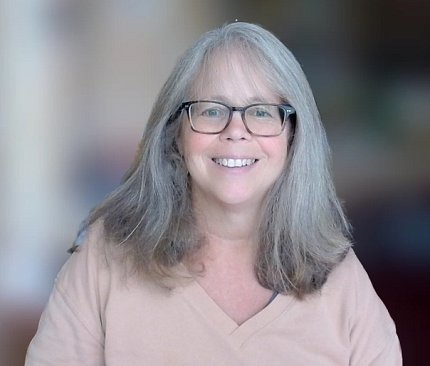OER’s Columbus Retires

Megan Columbus, director, Division of Communication and Outreach for NIH’s Office of Extramural Research (OER), retired in December after 34 years of federal service.
“I started at NIH as a temp when I wasn’t sure what I wanted to do in life,” recounted Columbus, whose first job at NIH was in the National Institute of Alcohol Abuse and Alcoholism.
“I had the pleasure of having a number of wonderful supervisors who let me explore. They supported and pushed me to develop in areas where they saw promise. I was very lucky to have them looking out for me, increasing my responsibilities, and offering me promotions,” said Columbus.
One supervisor at NIAAA encouraged her to participate in “one of NIH’s many outstanding leadership development programs.” As part of that program, she did a rotational assignment in OER. Shortly thereafter, in 1999, she joined the OER staff and has been there ever since.
Columbus has had a number of interesting roles in OER. She started as a special assistant to the director of the Office of Policy and Extramural Research Administration, focused on Vice President Al Gore’s Reinventing Government initiative. When a project emerged to transition NIH away from a paper-based grant application process to electronic, federal-wide application forms, OER named Columbus program manager of this massive endeavor.
“At one point, we had dozens of working groups on which over 300 people across NIH were participating to try and figure out how to make this work,” she said.
The effort to transform NIH’s grant submission process required developing and exercising change management, communications, and project management skills well beyond what she had ever done before.
“It took time, and there were bumps in the road, but we successfully transitioned NIH and some of our sister agencies to a fully electronic grant application process.” The epic effort won her and colleagues many awards and was even the subject of a Brookings Institution case study on leadership.
Columbus has had a variety of roles involving eRA, the electronic system to process grants, including founding their first planning office, supporting their communication needs and serving as program manager for eRA servicing of other agencies.
And then a new opportunity arose. “In 2007, OER leadership decided to establish a communications office. And they asked me, ‘do you want to set this up?’ So we did, initially while I continued to manage e-submission of grant applications. The director of communications has been my gig ever since.”
Under her leadership, OER’s centralized communications office has grown to a full services shop: web development; legislative and media affairs; outreach; extramural staff training and more. Their office started one of the first blogs at NIH, now called “Open Mike,” which reaches more than 300,000 readers. “I love that we could use the blog as a way to give the public some insight into the NIH leadership’s perspective, and to offer a new vehicle for hearing comments from the public,” Columbus said.
“For me, one of the greatest blessings of working in OER was the opportunity to work with and learn from Megan,” said OER Director Dr. Michael Lauer. “During her 34 years of service, she emerged as one of NIH’s leading lights. Megan developed an exemplary communications and outreach operation which in many ways emerged as the face of NIH.
“I remember early in the pandemic, Megan thought we should prepare and release a video with messages of caring and assurance. That idea turned out to be spot on and went a long way toward helping us—NIH staff and hundreds of thousands of extramural researchers—get through a difficult time.”
Columbus said she is grateful to OER for “the opportunities to think creatively and to problem-solve in a way that meets the needs of both the government and those in the grants community.”
To her successor, she offered this advice: “Your team is your most valuable asset. Pave the way to allow them to shine and succeed. Work hard but keep it fun.”
Columbus holds a BA in international relations from Bucknell University, has professional certifications in information technology management and loves to travel around the world. Just after college, she worked for a small nonprofit doing international development assistance.
“I realized that unless I’m in the country, it would be just fundraising most of the time and that wasn’t so fun,” Columbus said.
As she was figuring out her path, she decided to spend time learning about leadership in the great outdoors, backpacking in the Painted Desert, telemark skiing and living in quinzhees—snow cave igloos—caving and white-water kayaking as part of the National Outdoor Leadership School. She did all of these things, then began her federal career.
“The lessons I learned working with teams in the wilderness served me well as I transitioned to leading teams at NIH,” she said.
In retirement, Columbus plans to continue her extensive volunteer work, play more and travel.
“I love NIH, both the mission and the people,” she said. “I wanted to retire so I could be open for whatever comes along next.”
